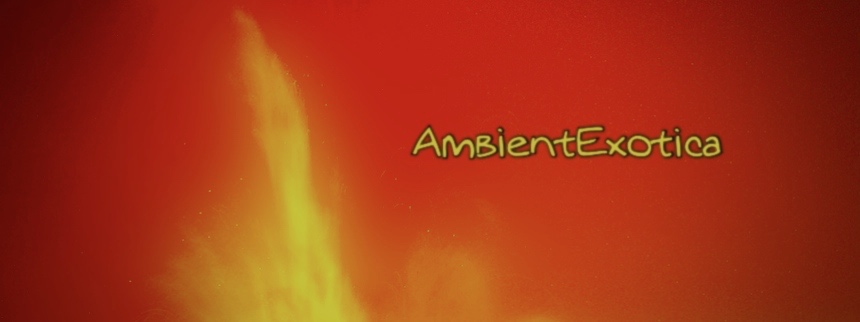
Barney Kessel
On Fire
1965
Many an enthralling thing come together in the first ever live album of Jazz guitarist Barney Kessel (1923–2004), released in 1965 on Kessel’s private label Monarch Records. And Kessel knows the constraints and restraints that occur in live surroundings, that’s why he prefers to offer his service in studios only. Johnny Magnus, KMPC radio DJ utters the following words of wisdom in the liner notes that capture his surprise when he became aware of Barney Kessel at PJ’s Club in West Hollywood: “My surprise was due to the fact that I have seldom seen these guys outside a recording studio. […] Most live recordings … that is to say on location dates leave much to be desired sound-wise: you have to forsake accoustically for the spontaneity of the performance before a real, living, receptive audience, in a setting conductive to inspired playing.” In this recording, there’s no trade-off. Enchantement is exactly what happens in a club that is nowadays known as the Starwood Club. Kessel is joined by Jerry Scheff on the bass and Frankie Capp on drums. Gyring between Bebop, Bossa Nova and oneiric interstices, On Fire only disappoints when its title is interpreted literally, as the material is so mellow and bucolic that the tonality of Exotica is evoked even without the respective instrumental base. Here is a closer look at all of the seven tracks and longform pieces and the thermal heat they evoke.
The album title is mobbed-up and infiltrated right at the beginning when soothingly warm guitar chords serve as the licking flames. Everything is perfectly in order and smoothly laid out in front of the listeners. Slow Burn, a Kessel original, is one of those archetypical Bebop artifacts that evoke the cool attitude of the prowler on a sunny day in the streets of a megacity. The asphalt may be burning, the mood, however, remains soothing instead of seething. Jerry Scheff’s double bass billows bubble along to Kessel’s sinews, and while there is eclecticism embroidered in this piece alright, it only serves as the vestibule to the next hook. Frankie Capp’s soft silvery hue of the hi-hats rounds off the midday atmosphere. The following piece is a rendition of Adolph Green’s, Betty Comden’s and Jule Styne’s Just In Time and enchants with its mucoid-viscid guitar chords that are sweet and gooey as honey. Despite their appearance, the performance is driven by fast tempos, shapeshifting polyrhythms and whirling cataracts of punctilio guitars. Only the double bass and its legat physiognomy serve as the anchor and pillar in this increasingly drum-infested ride. The Shadow Of Your Smile by Johnny Mandel and Paul Francis Webster is the final piece of side A and serves as the eminent lowflow cascade. Dreamy guitar chords, moony and blue at the same time, mellifluous cymbals and ligneous clicks round off a gorgeous piece of dreaminess that is exotic enough to be considered even by serious Exotica fans, i.e. you.
Side B sees the trio’s continuation to unfurl great interplays in a faster corset. Recado Bossa Nova (Gift Of Love) by Djalma Ferreira and Luiz Antonio is hued in a similar twilight as The Shadow Of Your Smile has previously shown, but the uptempo pararhythmic convulsions and the sophisticated array of saltatory licks make this a willfully convoluted performance that carves out the interdependency of the textures rather than the power of stacked chords. This would be the domain of George Duke’s Sweet Baby and its midtempo mélange of Kessel’s languorous strumming that ventures into paradisiac shelters, observatory U-turns and nostalgic contretemps that are only intensified by Jerry Scheff’s higher bass notes. It’s a Cool Jazz piece alright, quite the unexpected sparkler in the album’s given theme. Afterwards, Anthony Newley’s and Leslie Bricusse‘s Who Can I Turn To is a short but gentle sanctuary of superbly sun-soaked chords whose orange textures evoke hammock-friendly superimpositions of tropical isles, lazy days and an ever-increasing insouciance, with Rudy Toombs’ One Mint Julep serving as the grand finale of over seven minutes. Bebop jumpiness chord- and texture-wise on the guitar, a swinging beat with the wooden verve of the contrabass make this freely flowing journey a great outro, one that is considerably concentrated and cohesive despite the possibilities to branch out in order to light the fire.
On Fire is an exaggeration in terms of Exotica and especially so when the trio’s mutual understanding of each other’s qualities and characteristic movements is considered. This is not a hot grill, there’s no barbecue made of intertwined labyrinthine chord progressions, no quick succession of pandemic drum fusillades, zero gunmetal fuerte amidst the forte. On Fire therefore awakens expectations it cannot possibly fulfill. This is the worst thing one can attest, for once this impression is overcome, the live performance becomes a feast for the connoisseur and even the Exotica aficionado. While it is true that there is no bongo drum, let alone an esoteric instrument in place, the perfection of the three main ingredients and their polyphony is simply astounding. The chords are warm and benignant even in the faster material, but it is the slowed down, willfully easygoing material that enchants most. Barney Kessel has never shied away from great melodies and catchy riffs against all odds, as these devices don’t make for a great Bebop record per se. But they cater to the specific needs of a specific audience, and I surely don’t need to tell you which clientele I mean. On Fire is available on vinyl only, but remains a great testimony to one of Jazz’s biggest guitarists.
Exotica Review 452: Barney Kessel – On Fire (1965). Originally published on Sep. 26, 2015 at AmbientExotica.com.
